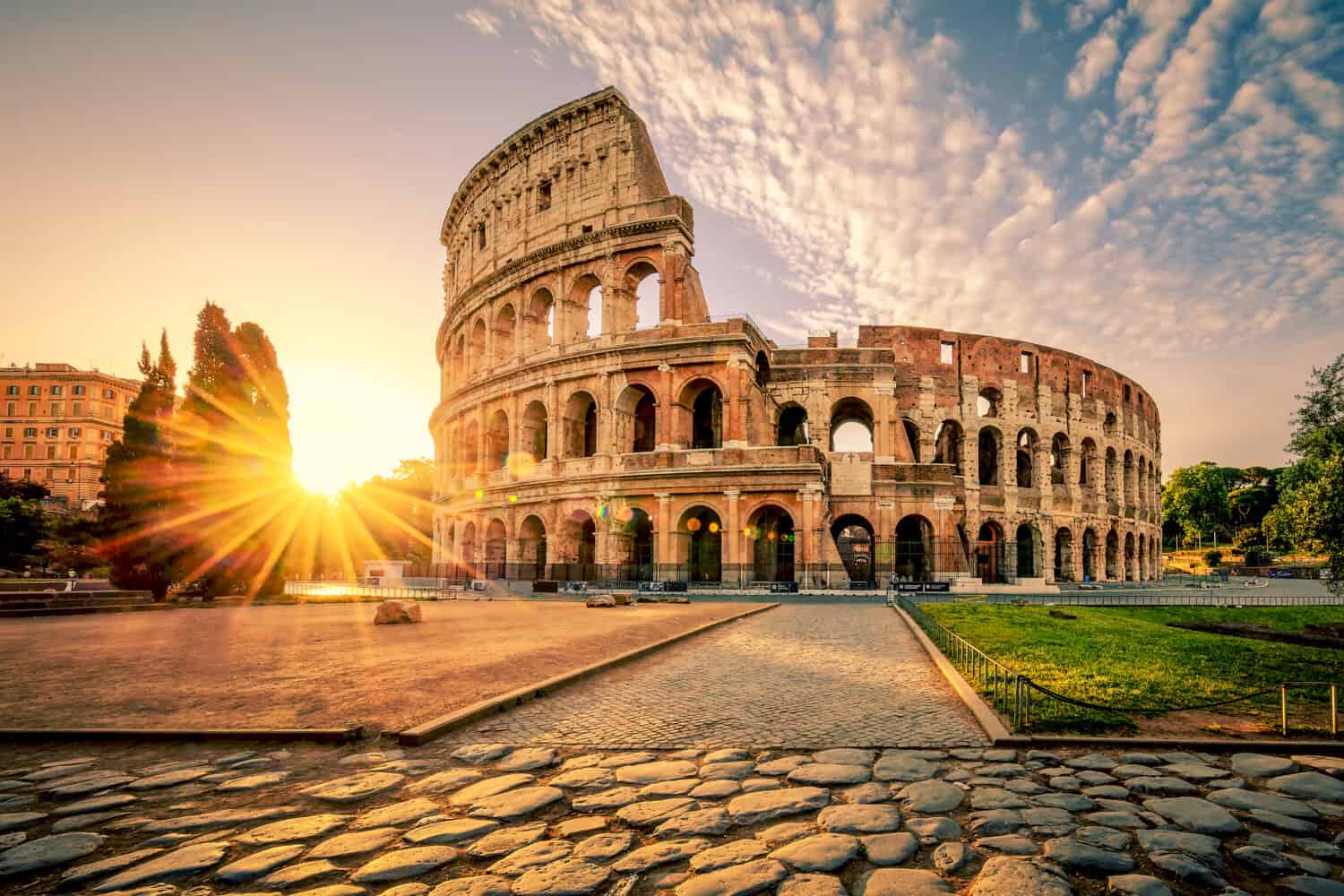Europe remains a top destination for travel, especially in 2023. Global leisure travel increased roughly 31% from spring 2019 to March 2023. What are the 10 fastest-growing towns in Europe everyone is talking about? Some of them are staples of European travel, but some may surprise you!
1. Berlin, Germany
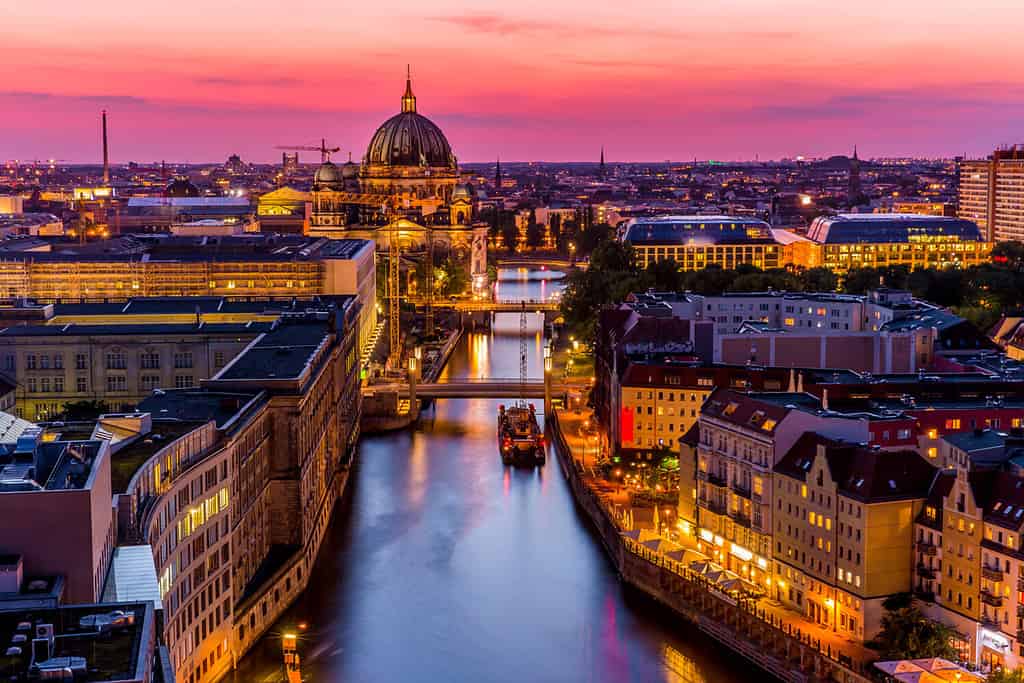
The Berlin skyline at dusk boasts spectacular blue, purple, and pink hues in one of the 10 fastest-growing towns in Europe.
©Finn stock/Shutterstock.com
Why is Berlin — “The Grey City” — one of the 10 fastest growing towns in Europe everyone is talking about? Population shifts are one reason. By 2025, Berlin’s younger population, those under 18, is expected to increase by 6.3%. As well, Berlin’s older population — those aged 65 and over — will rise by 11%. Like many areas in the United States, however, bigger is not always better. Berlin will continue to face housing, school, and transportation shortages to keep up with the increase. Those building demands will provide jobs, yes, but will also continue to drive up housing costs.
Just visiting Berlin? You need to visit the most famous sites. Tour the Reichstag and glass dome, which was completely modernized when the government decided to move the federal building to Berlin. Tourists can look out at the vast busyness of the city from the dome and can also view the government district on a boat tour. Don’t miss the Brandenburg Gate, Berlin’s preeminent attraction. Built in 1791, the Gate remains a reminder of Berlin’s tumultuous and progressive past. The highest attraction in the city is the Berlin Television Tower (also known as the Fernsehturm). Standing at 368 meters, the Tower allows a panoramic view of the city. Gendarmenmarkt Square is home to elite shopping and three of the most intricate examples of architecture in Berlin: The Concert House and the French and German cathedrals.
Looking for something a little different? Visit the Markthalle Neun, a 120-year-old haven for foodies. From German and Italian cuisine to doughnuts, Markthalle Neun is a culinary delight. The East Side Gallery boasts a 1,316-meter section of what is left of the Berlin Wall. Artists from all over the world feature their work in this melding of modern and historic Germany.
2. London, England
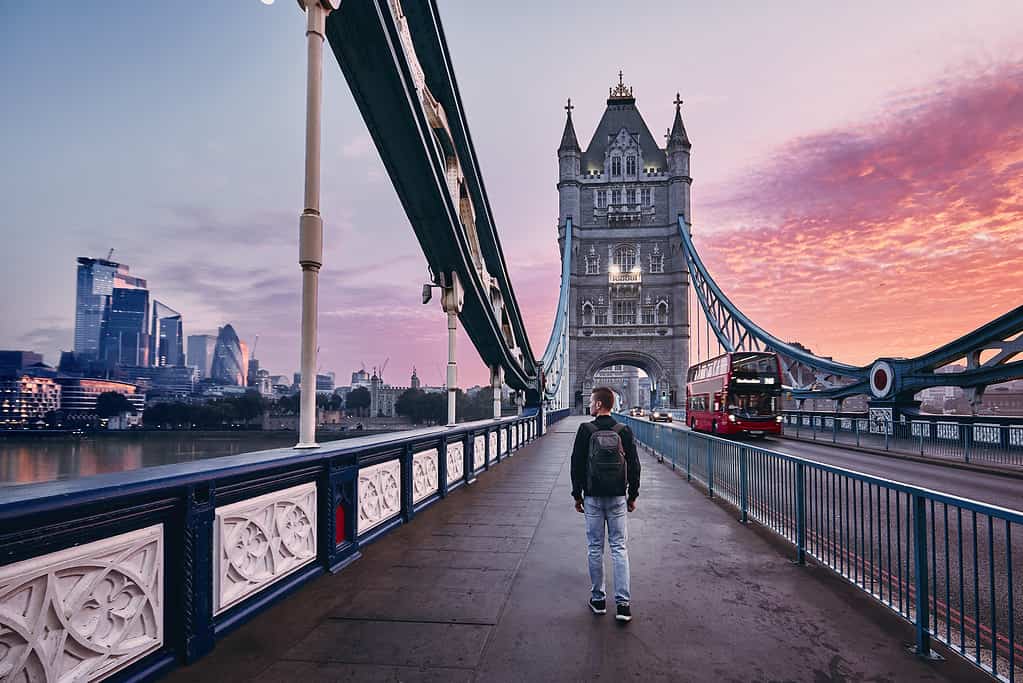
London’s population growth, largely due to migration, has spurned “The Big Smoke” to grow even bigger.
©Chalabala/iStock via Getty Images
London continues to grow, and it’s no surprise that this historical city is expanding. Again, population growth, largely due to migration, has spurned “The Big Smoke” to grow even bigger. A positive change from this growth is ethnic and cultural diversity, transforming London into a bustling multicultural environment. Another positive effect of migration is that those moving to London have filled gaps in jobs — chiefly in the healthcare, hospitality, construction, and finance sectors. As in any developing city, growth presents its own set of problems for London to expand its infrastructure to keep up, but London has proactively handled the increase well.
Where should you go in London? From historic Big Ben to the modern London Eye, this city does not lack in sightseeing attractions. If you need reminding, tourists clamor to Buckingham Palace, Hyde Park, the Tower of London, Saint Paul’s Cathedral, and Madame Tussauds.
Seeking a mix of London’s rich history and modern culture, visitors also visit more unusual attractions. Check out the fake houses of Leinster Gardens, which are difficult to spot. When the Metropolitan Line was being built, the city needed to tear down two houses to create an air vent. Locals were enraged when they found out about the demolition, so the Line made a compromise. It would build two facades of the houses to mitigate the eyesore: a historical attraction was born. The Tower Bridge is famous, but the Bascule Chamber located beneath the Tower’s chambers is not. The Chamber, a huge, cavernous space below the Tower, is only used to house the counterweights when the bridge opens. It’s both a juxtaposition from the Bridge itself and a place for annual events such as the Bascule Chamber Concerts which are held in the summer.
3. Madrid, Spain
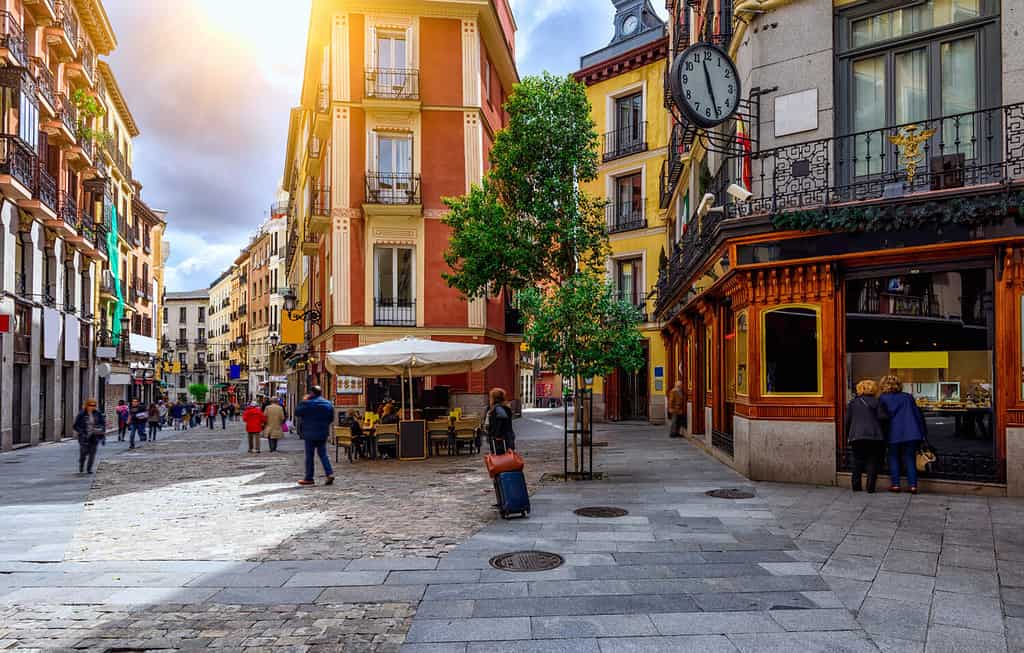
Rich in history and culture, Madrid offers many points of interest for travelers.
©Catarina Belova/Shutterstock.com
After becoming the capital of Spain in the 1500s, Madrid experienced rapid manufacturing growth. Then in the 1800s, construction propelled Madrid into growth. In the 20th century, industrialization and technology continued to fuel Madrid’s expansion. In the past few years, the spread of financial institutions, universities, and corporations has advanced Madris into one of Europe’s fastest-growing towns. It is now one of the 10 fastest-growing towns in Europe everyone Is talking about.
Rich in history and culture, Madrid offers many points of interest for travelers. Its renowned Golden Triangle of Art features three acclaimed museums: the Museo del Prado, Reina Sofía, and the Thyssen-Bornemisza. The Prado features Velázquez’s Las Meninas, one of the most prominent pieces in Western art. The Renia Sofía showcases 20th-century Surrealist and Cubist paintings, including Picasso’s monumental anti-war oil painting Guernica. For the best views of this Spanish capital, ride the Teleférico, the dual cable transport traveling 1.5 miles at a maximum height of 131 feet.
American novelist Earnest Hemingway spent much time in Madrid, and you can vicariously follow in his footsteps by visiting El Sobrino de Botin, known as the world’s oldest restaurant. Another Hemingway haunt to explore is La Venencia, an anachronistic bar featuring wooden barrels and an antique cash register.
4. Amsterdam, Netherlands

With a reputation for being free-thinking, Amsterdam’s innovation, creativity, and opportunities for entrepreneurial growth elevate its expansion.
©Andrew Mayovskyy/Shutterstock.com
This gorgeous city has experienced the population growth of many of its fast-growing cohorts. Yet, its business industry has also advanced Amsterdam’s development. With a reputation for being free-thinking, Amsterdam’s innovation, creativity, and opportunities for entrepreneurial growth elevate its expansion. In fact, in 1602, Amsterdam opened the world’s first stock exchange. Amsterdam hosts the Netherlands’ most powerful supercomputer and continues to innovate in sustainability and clean energy. Scientific conferences seek out Amsterdam for its progressive transformation, making it a competitive destination for global talent.
Start your exploration of Amsterdam by visiting its famous historical sites. Dam Square, on the mouth of the river Amstel, is a must-see with its myriad of memorable buildings. You can tour the National Monument, the Royal Palace, and the Nieuwe Kerk in Dam Square. Don’t miss the Portuguese Synagogue. When Portuguese-Jewish families sought escape from the Inquisition in the 1500s, the Netherlands offered them the opportunity to pursue their religion mostly openly. Though Amsterdam has numerous historical sites, one of the most iconic is the Anne Frank House. Somberly relive the bravery of the Franks hiding from the German soldiers during World War II and the horror of the aftermath of being discovered in this sacred house.
For lighter and more unusual fun in Amsterdam, visit the Plastic Whale. Visitors take a two-hour boat ride where they not only view the architecture but also fish for plastic. This excursion kills two birds with one stone: See the sights of Amsterdam while saving the environment! At A’DAM Lookout, you can balance your good deeds with old-fashioned fun. Ride Europe’s highest swing at 109 yards (100 meters) above Amsterdam.
5. Prague, Czech Republic
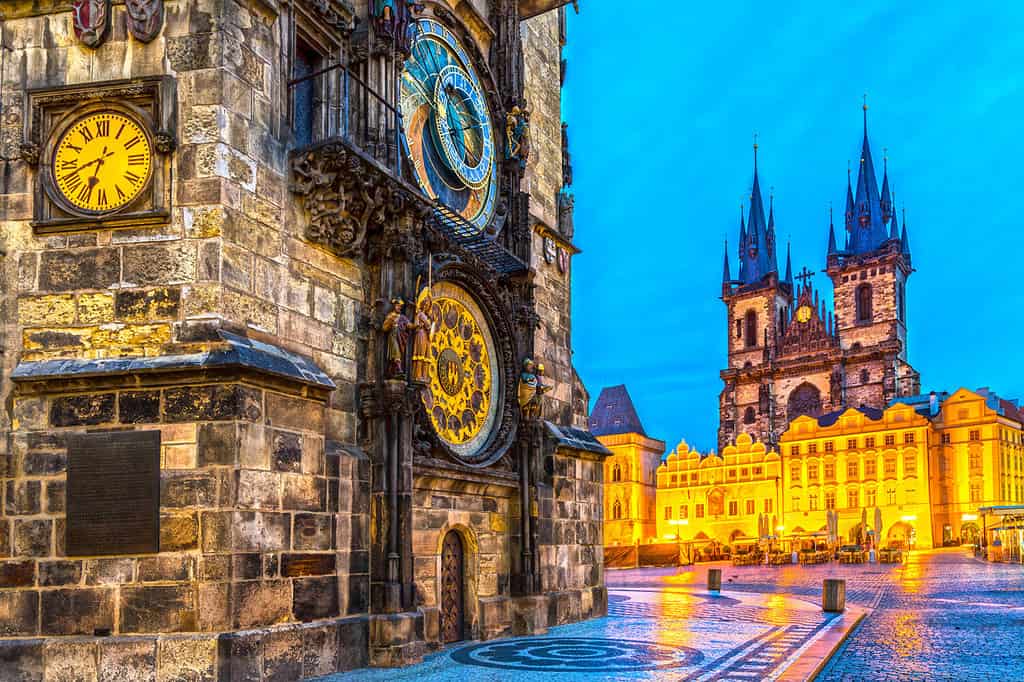
Prague is one of Europe’s fastest-growing towns.
©Luciano Mortula – LGM/Shutterstock.com
What makes Prague one of the 10 fastest-growing towns in Europe everyone is talking about? Again, population growth is one reason Prague is one of Europe’s fastest-growing towns. Prague’s population is getting older, with the number of the more mature citizens growing faster than its children. Another reason for its growth is its highly-ranked digital ecosystem; its cybersecurity is almost impenetrable. Foreigners are welcome in Prague, making it one of the most diverse countries in Europe. As well, because Prague is positioned in the center of Europe, its proximity to almost any other European country makes it desirable.
If you visit Prague, you have a vast array of sightseeing spots to check out. Strolling the famous Charles Bridge is a must. Built in 1357, the Bridge connects the Old Town and the Lesser Quarter. Local lore maintains that the builders used eggs for the mortar to hold its 16 arches together for over 500 years. Explore the pristine Old Town Square and the Astronomical Clock, and then head to Malá Strana to view the Infant Jesus of Prague (also known as the Child of Prague). If you’re feeling royal, examine the austere Prague Castle. Admission is free to the grounds of this famous edifice, which is the official residence of Prague’s president.
What about the more unusual attractions? Locals recommend axe-throwing at The House of Axes! for a step off the beaten path. The Gallery of Steel Figures is a wax museum hybrid where sculptures inspired by movie stars, cartoon characters, and animals are built with scrap metal. Other quirky stops include jazz dinner cruises and watching a puppet show at the National Marionette Theater.
6. Rome, Italy

The famous fountain of Trevi enchants during a sunny summer day in Rome, one of the 10 fastest-growing towns in Europe.
©Igor Link/Shutterstock.com
When most people think of traveling to Europe, they think of Italy. Beautiful Rome, Italy, is one of the fastest-growing cities in Europe. Rome’s population has been increasing, but not as dramatically as other fast-growing European towns. What makes Rome one of the 10 fastest-growing cities in Europe? As the capital of Italy, Rome is a tourist haven, bringing growth in revenue, commerce, and temporary residents.
The problem with traveling to Rome is that unless you have a good chunk of time, it’s almost impossible to visit everything you want to see! Rome’s vast history, art, culture, and cuisine make it a “bucket list” haven. Though it’s generally Rome’s top destination, I would make The Colosseum my last stop in Rome, kind of a finale or dessert. When the Colosseum opened in A.D. 80, it held 50,000 spectators. It remains one of the world’s most spectacular landmarks because of its sheer in-person size and magnificence and its historical significance.
The Sistine Chapel is another must-see with its Renaissance art and Michelangelo’s timeless frescoes. As well, St. Peter’s Basilica also embodies Roman architecture. Even though you probably won’t run into the Pope, St. Peter’s maintains a strict dress code. Short skirts, low-cut tops, hats, bare shoulders, and visible tattoos. are prohibited. The Trevi Fountain is also a mainstay among tourists. Not only does it offer a model of Baroque artistry, but its mythology and lore also continue to draw hoards of onlookers daily. It’s also a fantastic spot for memorable photographs!
I’ve only skimmed the surface of Rome’s points of interest, but if you’re looking for the out-of-the-ordinary, here are a couple of suggestions. Traverse Santo Stefano Rotondo, the First Circular Church in Rome. Soak up one of the ubiquitous Candlelit Concerts happening regularly throughout the city. Enjoy a local’s view and commentary on a segway. Relish a picnic at Villa Doria Pamphili Gardens.
7. Paris, France
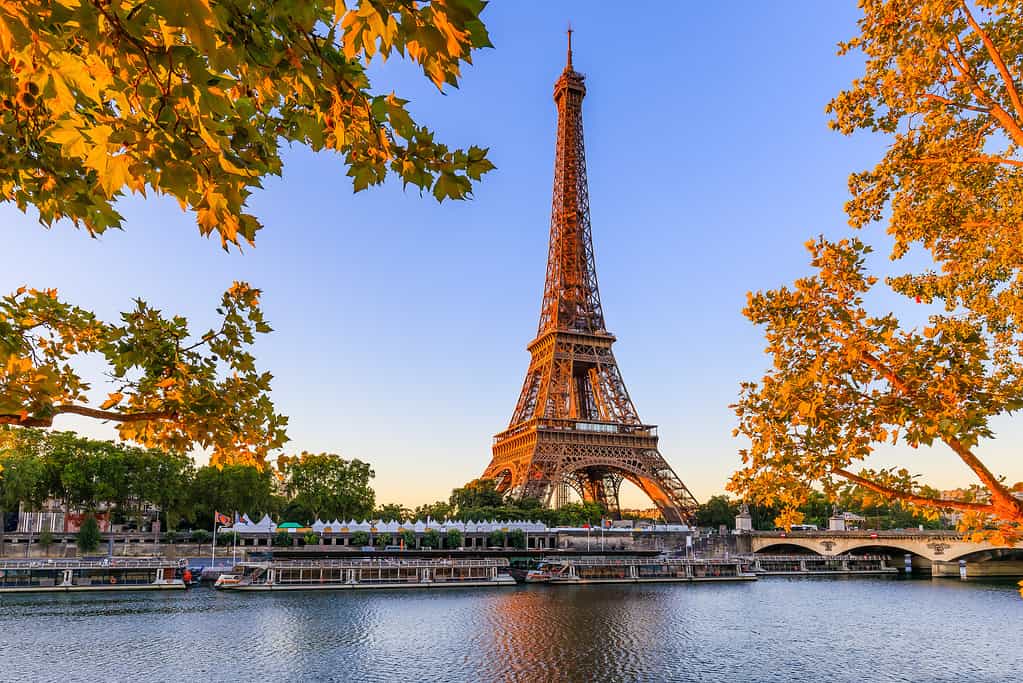
Paris is one of the fastest-growing European towns because of population increase and economic factors.
©SCStock/iStock via Getty Images
Paris, the “City of Light,” could also be considered the “City of Love” for its lauded connotations of romance. It is one of the fastest-growing European towns because of population increase and economic factors. Paris is also ahead of other European cities such as London comparatively in housing affordability and shortages.
As with Rome, Paris provides a vast array of options that take a prolonged visit to truly experience. The Notre Dame Cathedral is at the top of everyone’s list. A Parisian mainstay along the River Seine, the Cathedral took nearly 200 years to complete. Due to significant fire damage in April 2019, the Cathedral is currently closed, but travelers can visit a new exhibit that debuted in March 2023 called, “Notre-Dame de Paris: at the heart of the construction site.”
It goes without saying that to say you’ve been to Paris equals experiencing the Louvre. It will be crowded, but the long waits and masses will be worth it to view — albeit from the back of a viewing room among hundreds of others with their cell phones raised — the alarmingly realistic sly smile. See the Eiffel Tower at night when Paris’s lights adorn the horizon. Built in 1889 for The World’s Fair, the Eiffel Tower was never meant to be a permanent construction; yet over 130 years later, it stands as a testimony to the usefulness of its transmission capabilities.
For a change of tourist pace, visit Les Catacombes. An underground network of tunnels and caverns, Les Catacombes provides a cool underground maze containing the remains of several million Parisians. Above ground, walk along La Petite Ceinture, where the tracks of an ancient railway that circled Paris have been transformed into a walkway.
8. Barcelona, Spain

Barcelona is the ninth most attractive city in the world for living and traveling.
©Catarina Belova/Shutterstock.com
Why is Barcelona, Spain, one of the 10 fastest-growing towns in Europe? For starters, Barcelona is the ninth most attractive city in the world for living and traveling. It’s also the seventh-ranked city in the world for attracting investment in technology companies. The addition of Microsoft and Google as well as Barcelona’s own startup companies have helped to spur Barcelona’s advancement.
The Basílica de la Sagrada Família is a prime tourist point, and for good reason. The awe-inspiring exterior is breathtaking, depicting both a Nativity and a Passion facade, illustrating both the birth and death of Jesus Christ. Even though the Basílica has yet to be completed, visitors may enter the church’s interior to view the artwork and Art Nouveau architecture. The Gothic Quarter features relics of ancient Roman buildings and the Catedral de la Santa Cruz y Santa Eulalia. A labyrinth of alleyways and cobblestone streets surrounds the Catedral, and visitors can shop at unique boutiques and dine in quaint restaurants. Head over to Bogatell Beach to enjoy a plethora of recreation on this popular beach’s 600-meter-long shoreline.
For something off the beaten track, head to the Montjuic cable car to the Montjuic Castle. Montjuic features an Olympic Stadium, Botanical Gardens, and the Joan Miro Foundation. Explore Barcelona on wheels at Steel Donkey Bike Tours, where you can cover a lot of sightseeing ground in a short period.
9. Lisbon, Portugal
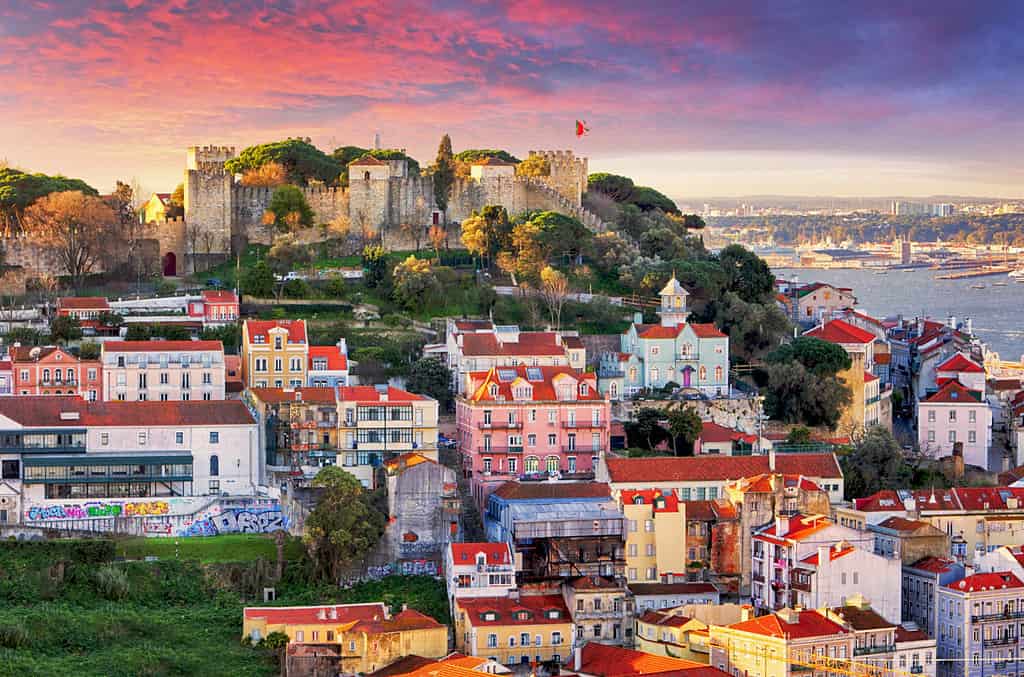
The Sao Jorge Castle highlights Lisbon, Portugal, one of the 10 fastest-growing towns in Europe.
©TTstudio/Shutterstock.com
Lisbon, Portugal, is a city that everyone is talking about! It’s one of the 10 fastest-growing cities in Europe in part due to its lofty spot as a technology hub. Portugal boasts a high level of engineering talent at a relatively low cost. As well, compared to Spain, France, and Italy, Lisbon maintains a higher level of English-speaking proficiency. Additionally, growth has fast-tracked since 2020 in the areas of tourism and private consumption.
All Portugal travelers need to visit the Praça do Comércio, the iconic plaza with yellow and white Pombaline structures. The Praça do Comércio is a central hub of Lisbon that offers plenty of shops, bars, and restaurants. The Lisbon Cathedral, an impeccable 12th-century Roman Catholic Church, contains a myriad of architectural styles such as Romanesque, gothic, baroque, and neoclassical. Another favorite landmark is the São Jorge Castle. Located in Lisbon’s Santa Maria Maio district, the complex features 10 towers, archeological ruins, an expansive garden, and a terraced square.
For more uncommon treasures, take a baking class at Homecooking Lisbon. Portugal’s pastries are noteworthy, and at the end of the day, you get to enjoy your own personally baked pastéis de nata. You can also view dolphins in Lisbon! Go on a dolphin-watching tour at the Sado Estuary south of Lisbon, where playful bottlenose dolphins abound.
10. Vienna, Austria

Experts project that Vienna will soon have a population of over two million.
©Vladislav Zolotov/iStock via Getty Images
Historic Vienna, Austria, is one of the 10 fastest-growing towns in Europe mainly due to immigration. Experts project that Vienna will soon have a population of over two million. Not surprisingly, many of these immigrants are Ukraine refugees. Another quarter of them hail from countries such as Syria, Afghanistan, Iran, and Iraq.
Visit the MuseumsQuartier, home to Vienna’s art hub with nine central museums. Another good choice is to cool off in the Danube River or just take a picnic. Built in 1897, the Wurstelprater is a Ferris wheel that soars 65-metre-high. Vienna offers everything the astute traveler would want in this historical city.
Thank you for reading! Have some feedback for us? Contact the AZ Animals editorial team.

